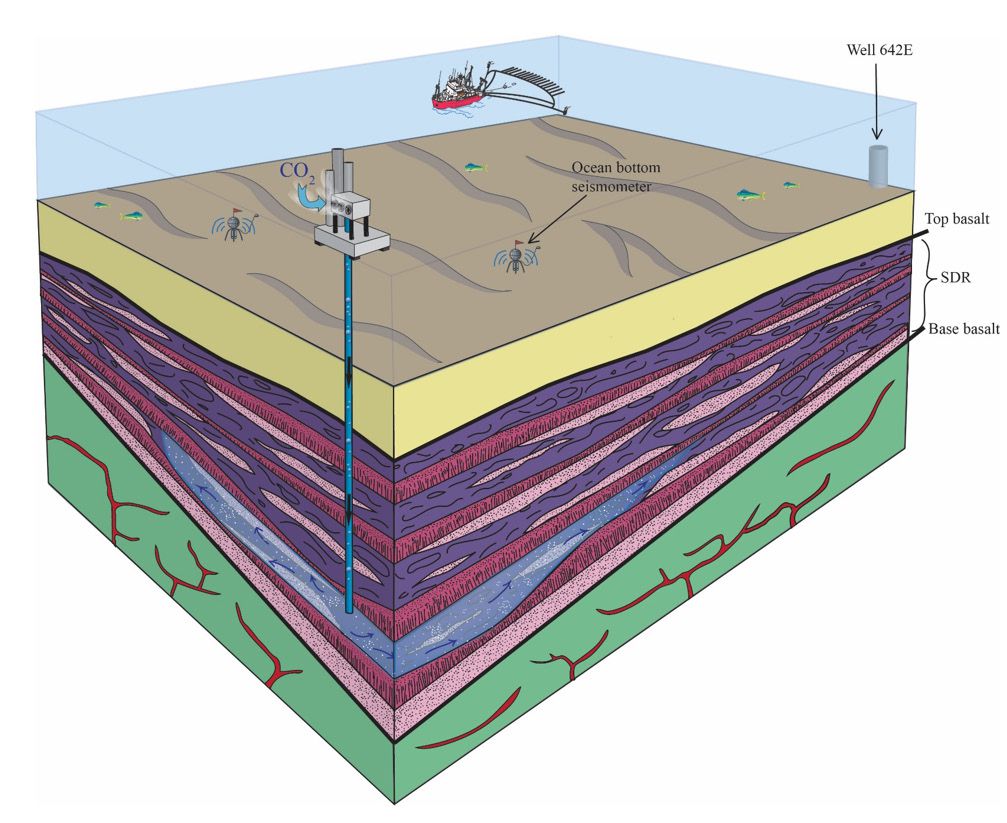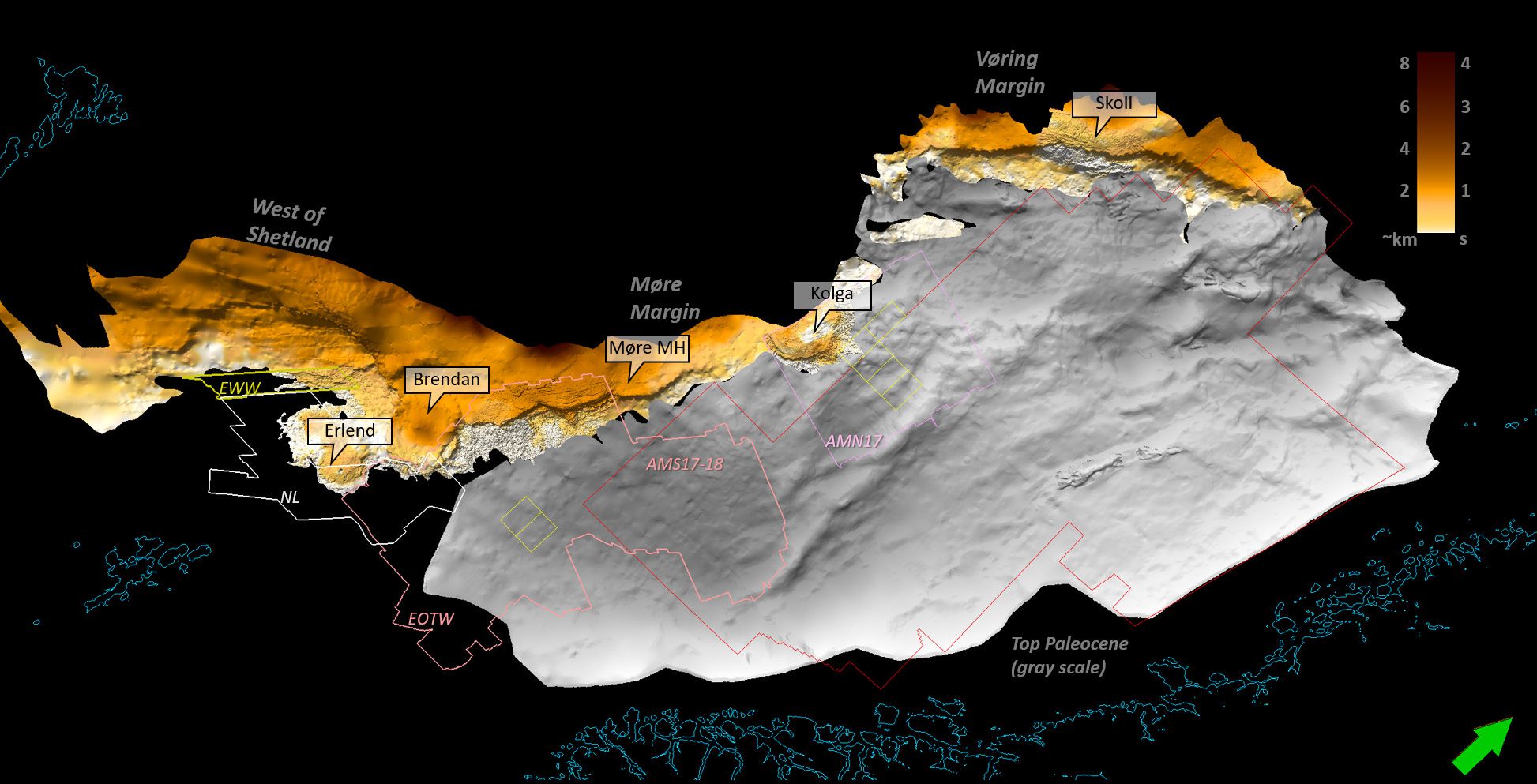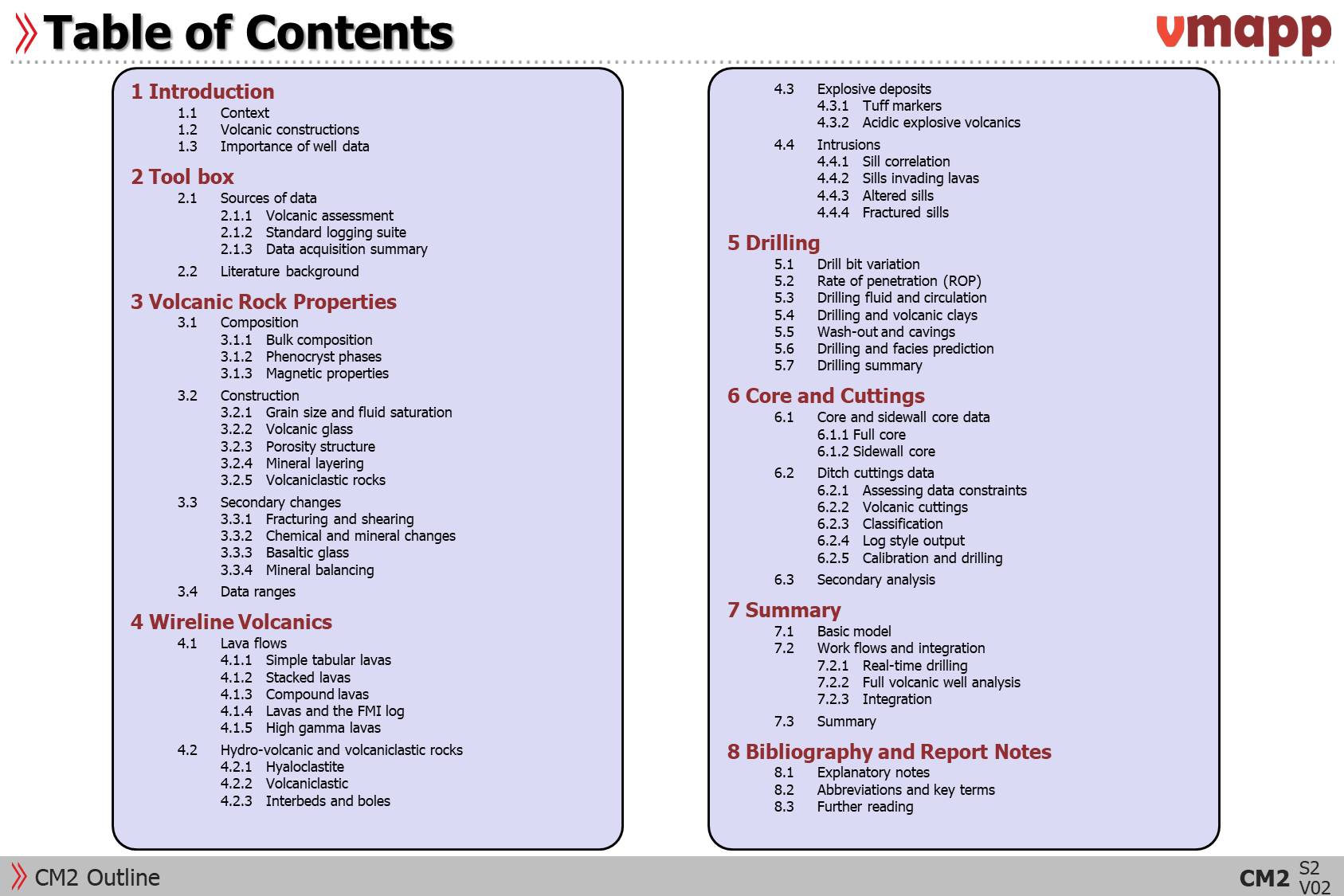Carbon Sequestration in Basalt
In order to get global net CO2 emissions to be reduced to net zero globally by 2050 (IPCC, 2018), new scientific and technological solutions with large-scale CCS need to be identified and developed. This may require up to 20 Gt CO2/yr to be captured and stored from 2050 (IPCC, 2018; P4 model), which is a dramatic increase of current carbon storage capacity, and will require large scale reservoirs for CCS.
Certain basaltic volcanic facies can form good reservoirs and have become a target for CCS. Example studies from Iceland show that CO2 injection into basalt is feasible, and that CO2 can be rapidly and permanently sequestrated within basalt sequences.
With voluminous volcanic sequences forming part of the basin fill of many basins globally including vast offshore rock volumes along volcanic rifted margins such as those present in the north and south Atlantic margins, west India etc., it is timely to consider CCS in Basalt
Basalt Storage Maps
In the NE Atlantic for instance basaltic deposits are currently present as thick sequences of subaerial lava flows including seaward dipping reflectors and landward flows, volcaniclastic deposits, subaqueous basalt flows, and sill intrusions both onshore and offshore along the continental margin. (The map indicates a basalt thickness data example).
VMAPP and CCS
The VMAPP group along with industry and academic collaborators have been actively investigating basalt CCS potential in both on and offshore settings for the past two years. What is clear is that to effectively exploit volcanic CCS potential for permanent CO2 storage around the globe, a robust understanding of volcanic rocks in the sub-surface is required.
For the past 6 years the VMAPP project has been focused on developing training and research in precisely this field, and therefore VMAPP has a huge amount to offer for companies interested in developing volcanic CCS projects. Whether it is general volcanology and volcanic facies understanding (covered in CM1), reservoir properties, wireline, or drilling operations (covered in CM2 and RM2), seismic imaging and interpretation (covered in CM3, CM4 and RM1), volcanic-carbonate interactions (RM9), or volcanic associated plays (CM5), VMAPP has a huge amount to offer!
Example of VMAPP content Key to CCS
Outline – A training manual and accompanying PowerPoint presentation investigating the key petrophysical properties of volcanic rocks and facies types, their interpretation from well data and their effect on drilling operations
Aims – The petrophysical variations found within common volcanic facies, their origins and their importance for hydrocarbon exploration and drilling
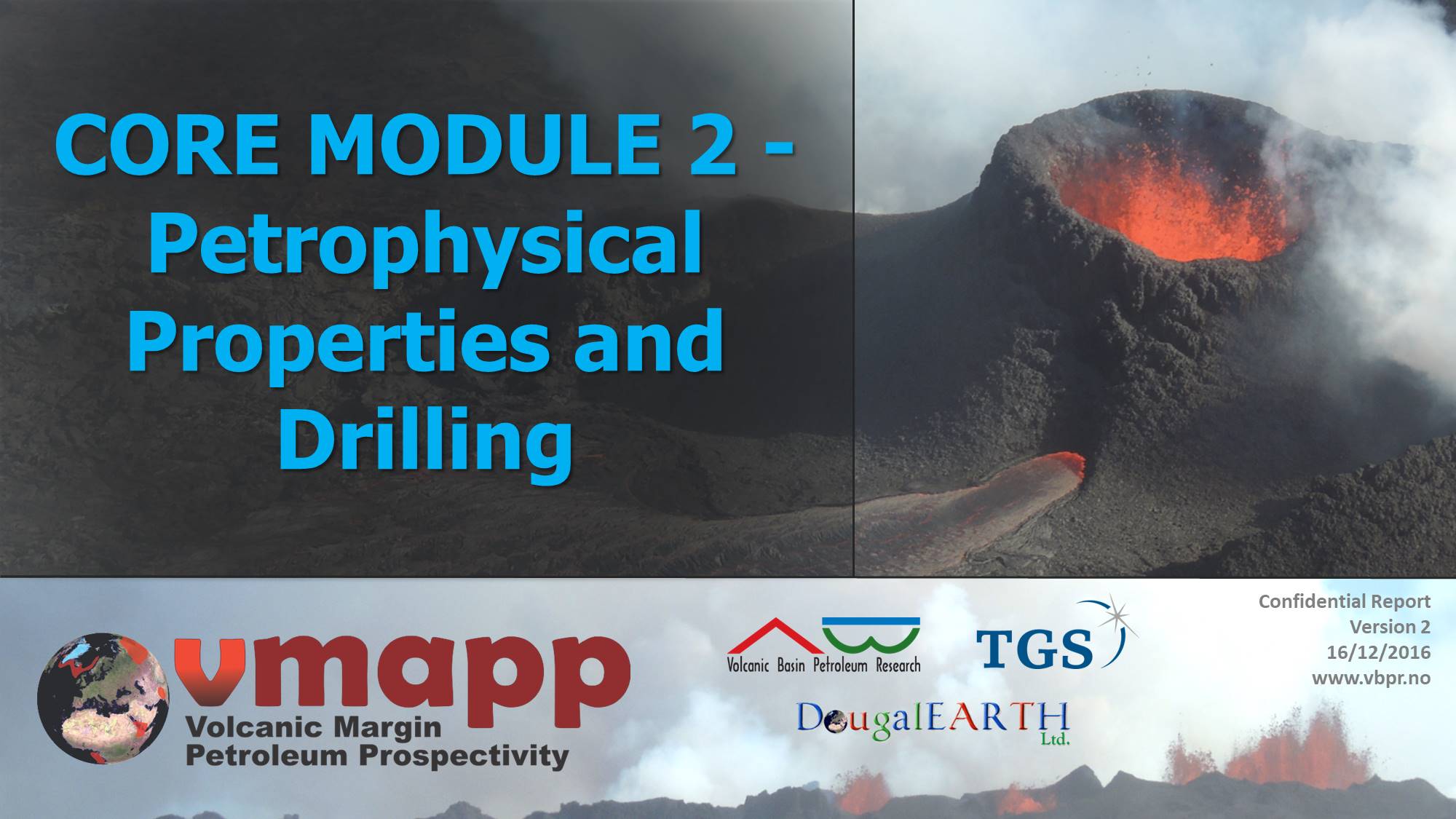
Core Module Reports: All the core modules are provided as extensive detailed reports to go with the Powerpoint versions. the headers of the reports match up to the footers of the reports for ease of navigation between both products
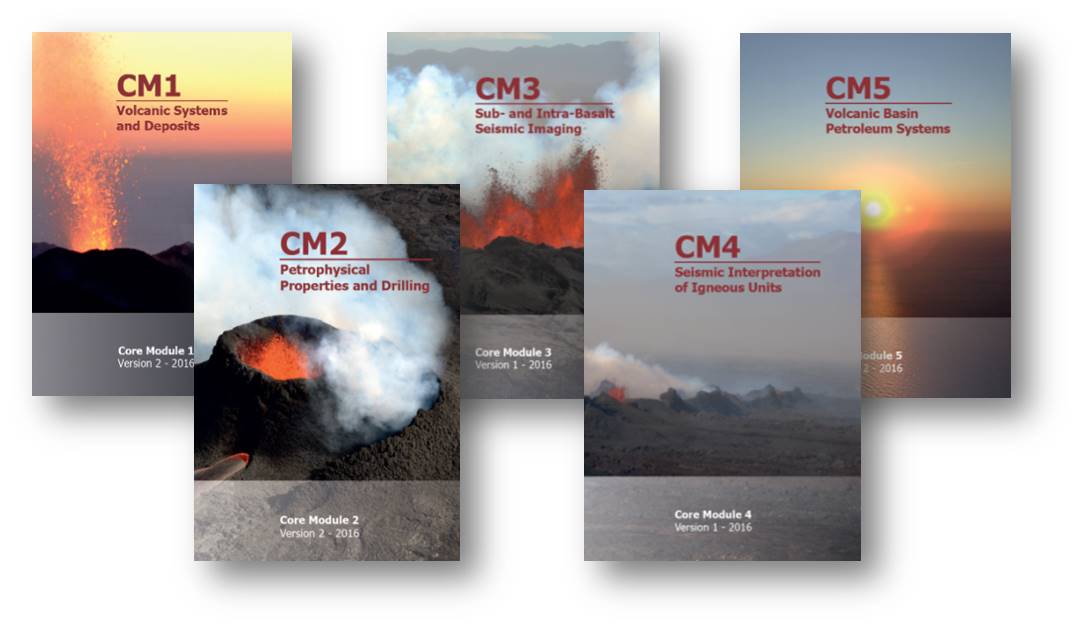
As a VMAPP1 customer you have access to the full CORE MODULE material (PPTs & report PDFs) in house
Some Key References
IPCC [2018] Global warming of 1.5ºC. An IPCC Special Report on the impacts of global warming of 1.5ºC above pre-industrial levels and related global greenhouse gas emission pathways, in the context of strengthening the global response to the threat of climate change, sustainable development, and efforts to eradicate poverty. World Meteorological Organization, Geneva, Switzerland.
Planke, S., Bellwald, B, Millett, J., Planke, E.E., Zastrozhnov, D., Carlevaris, P, Jamtveit, B, Rosenqvist, M., Jerram, D.A., Schmid, D.W., Berndt, C., Kjølhamar, B., Myklebust, R. 2020. Permanent Carbon Sequestration Potential in Offshore Basalt Sequences on the NW European Continental Margins. 82nd EAGE Conference & Exhibition 2020, 8-11 June 2020, Amsterdam, The Netherlands.
Jerram, D.A., Millett, J.M., Kueck, J.M., Thomas, D., Planke, S., Haskins, E., Lautze, N. and Pierdominici, S. [2019] Understanding volcanic facies in the subsurface: a combined core, wireline logging and image log data set from the PTA2 and KMA1 boreholes, Big Island, Hawaii. Scientific Drilling, 25, 15-33.
Millett, J.M., Manton, B.M., Zastrozhnov, D., Planke, S., Maharjan, D., Bellwald, B., Gernigon, L., Faleide, J.I., Jolley, D.W., Walker, F., Abdelmalak, M.M., Jerram, D.A., Myklebust, R., Kjølhamar, B.E., Halliday, J. and Birch-Hawkins, A. [2020] Basin structure and prospectivity of the NE Atlantic volcanic rifted margin: cross-border examples from Faroe-Shetland, Møre and Southern Vøring basins. Geological Society, London, Special Publications, 495, SP495-2019.
Nelson, C.E., Jerram, D.A. and Hobbs, R.W. [2009] Flood basalt facies from borehole data: implications for prospectivity and volcanology in volcanic rifted margins. Petroleum Geoscience, 15(4), 313-324.
Planke, S., Millett, J.M., Maharjan, D., Jerram, D.A., Abdelmalak, M.M., Groth, A., Hoffmann, J., Berndt, C. and Myklebust, R. [2017] Igneous seismic geomorphology of buried lava fields and coastal escarpments on the Vøring volcanic rifted margin. Interpretation, 5(3), SK161-SK177

